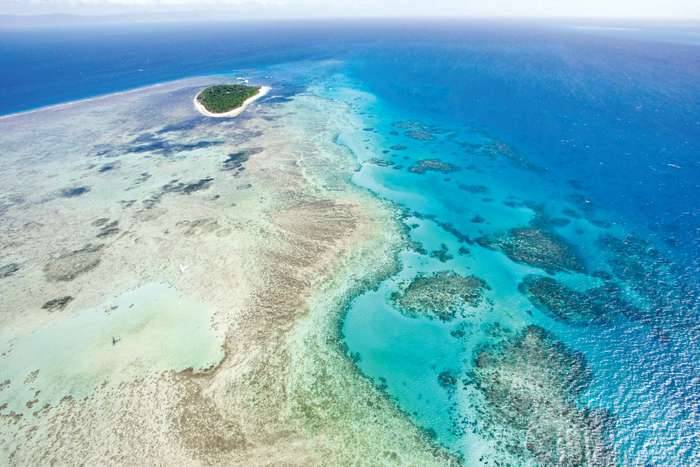
Australia, the smallest continent and one of the largest countries on Earth, lying between the Pacific and Indian oceans in the Southern Hemisphere. Australia’s capital is Canberra, located in the southeast between the larger and more important economic and cultural centres of Sydney and Melbourne.
Australia has been called “the Oldest Continent,” “the Last of Lands,” and “the Last Frontier.” In simple physical terms, the age of much of the continent is certainly impressive—most of the rocks providing the foundation of Australian landforms were formed during Precambrian and Paleozoic time (some 4.6 billion to 252 million years ago)—but the ages of the cores of all the continents are approximately the same. On the other hand, whereas the landscape history of extensive areas in Europe and North America has been profoundly influenced by events and processes that occurred since late in the last Ice Age—roughly the past 25,000 years—in Australia scientists use a more extensive timescale that takes into account the great antiquity of the continent’s landscape.
Australia is the last of lands only in the sense that it was the last continent, apart from Antarctica, to be explored by Europeans. At least 60,000 years before European explorers sailed into the South Pacific, the first Aboriginal explorers had arrived from Asia, and by 20,000 years ago they had spread throughout the mainland and its chief island outlier, Tasmania. When Captain Arthur Phillip of the British Royal Navy landed with the First Fleet at Botany Bay in 1788, there may have been between 250,000 and 500,000 Aboriginals, though some estimates are much higher. Largely nomadic hunters and gatherers, the Aboriginals had already transformed the primeval landscape, principally by the use of fire, and, contrary to common European perceptions, they had established robust, semi-permanent settlements in well-favoured localities.
Aboriginal Australians is a western term for the people who are from the Australian mainland and many of its islands, such as Tasmania, Fraser Island, Hinchinbrook Island, the Tiwi Islands, and Groote Eylandt, but excluding the Torres Strait Islands.
These peoples have a broadly shared, though complex, genetic history, but it is only in the last two hundred years that they have been defined and started to self-identify as a single group. The definition of the term “Aboriginal” has changed over time and place, with the importance of family lineage, self-identification and community acceptance all being of varying importance.

Arnhem Land artist Glen Namundja painting at Injalak Arts
ART
Australia has a tradition of Aboriginal art which is thousands of years old, the best known forms being Australian rock art and bark painting. Evidence of Aboriginal art can be traced back at least 30,000 years, with examples of ancient rock art throughout the continent. Some of these are in national parks such as those of the UNESCO listed sites at Uluru and Kakadu National Park in the Northern Territory, but examples can also within protected parks in urban areas such as at Ku-ring-gai Chase National Park in Sydney. The Sydney rock engravings are between 5000 and 200 years old. Murujuga in Western Australia was heritage listed in 2007.

Bradshaw rock paintings in the Kimberley region of Western Australia
In terms of age and abundance, cave art in Australia is comparable to that of Lascaux and Altamira (Upper Paleolithic sites in Europe), and Aboriginal art is believed to be the oldest continuing tradition of art in the world. There are three major regional styles: the geometric style found in Central Australia, Tasmania, the Kimberley and Victoria, known for its concentric circles, arcs and dots; the simple figurative style found in Queensland; and the complex figurative style found in Arnhem Land and the Kimberley. These designs generally carry significance linked to the spirituality of the Dreamtime. Paintings were usually created in earthy colours, from paint made from ochre. Such ochres were also used to paint their bodies for ceremonial purposes.

Aboriginal Memorial, National Gallery of Australia
Australia’s Textile Industry
The Australian textile industry employs approximately 36,000 people out of the 23 million in the country. Although this is a relatively small amount, Australia has still become internationally known for garment companies such as Billabong or Van Heusen, among others. Although fashion is one of the larger exports for Australia, it also provides raw goods and machinery as well. Due to the massive amount of open land in Australia, it is capable of growing a variety of natural textile fibres, such as cotton, hemp, and Banyan tree fibres.
Australia’s unique natural materials used for textiles make it stand out in the market. The country is known for its sale of wool as a raw product. Due to the environment and plant life, Australia uses fibres from the tree life, like the Banyan tree, to create clothing and other textiles. The Banyan tree is used to make thermal wear and even fashion items. Though it is not unique to Australia and actually originated in India, it is a tree of many properties. All of the parts of the tree can be utilized:
- Bark – The bark can be used to create fibres for clothing and even paper. It can also be broken down into pastes and medicines for bruising and other ailments.
- Fruit – The fruit off the tree is edible and used in local dishes and is considered to be a breed of mulberry.
- Leaves – The leaves are used for shade and also for dishware.
Additionally, Australia has begun to join the countries that are working on technical textiles. Since this is becoming such a large market, innovation has become very important for this industry. Some of the new products in development are synthetic turf for arenas and fields and soft body armour for military use. Australia is also involved in creating medical devices like leg elevation pillows, diapers, and heat retention fabrics. It has partnerships with larger companies like Kimberly-Clark to develop new textiles for the market.
Aboriginal and Torres Strait Islanders make a variety of objects from animal and plant fibres. Their skills in basket weaving, knotting and utilising animal skins are evidenced in everyday tools such as baskets for collecting food, nets for fishing and skin cloaks for warmth. They also make ceremonial items such as headgear.
While these traditional crafts are still practised, the arts and crafts of Aboriginal and Torres Strait Islander people have expanded to include textile techniques such as rug making, hand-painting fabrics, screen-printing and batik, to name just a few.
String bags
String bags are used for the storage and transport of food and other materials including personal items and tools. They are also used as sieves in the preparation of food, for example, when water lily seeds are separated from their capsules.
These bags can be distinguished by the type of stitch used to make them. Some are made with knots, mainly sheet bends, but not always so; others with looping stitches, the main varieties being simple loop, loop and twist, and hour-glass or figure-of-eight.

Making a string bag using figure-of-eight stitches
Baskets
Baskets made by Aboriginal and Torres Strait Islander artists are of two main types, those made by a weaving technique and coiled baskets. There are varieties within each main group.
With the coiling method, as the name implies, the maker forms a foundation coil from a bundle of fibres, string or cane. In indigenous coiled baskets a working strand of fibre makes a series of button-hole stitches along the foundation which is shaped into tight coils or spirals as the work proceeds. Each button-hole stitch not only encloses a foundation coil but catches through a button-hole on the coil beneath. Flat or conical mats can be made in this way, or baskets if the coils are forced into the vertical as the work progresses.
This method of weaving baskets and other fabrics is known as weft twining. There are two sets of elements, a warp set made of bundles of fibres or a split cane, and a weft set usually with two working strands that interlace with the warps. In some baskets, the makers occasionally use three-weft strands as a decorative device. Three-strand twining results in a noticeable cording effect on the surface of the fabric.
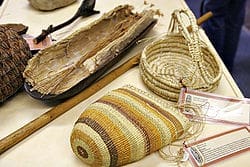
Pandanus weaving
The 1992 VicHealth National Craft Award was awarded to Elizabeth Djuttara from the Ramingining community. The term used for weaving in this community is buyu. Buyu-dhamuk means close weave and buyu-gadagada means open weave.
The three youngest branches of leaves from the top of the Gunga (pandanus spirifis) or Screw Palm, are hooked down by a long stick and the prickly edges stripped off with the thumbnail. On returning from the bush the women strip the long leaves into several fibres, bundle them up and hang them to dry. Weaving may commence at this stage, and the finished article left white or decorated with ochres, or the fibres are beautifully coloured with the natural bush dyes, then woven.

Ceremonial items
All Aboriginal objects are not made from or incorporating fibre are for use in everyday life. Beautifully crafted, ceremonial fibre objects are still made and used in northern Australia. These include sacred strings incorporating colourful parrot feathers; ceremonial twined baskets decorated with feathered string and hung with feathered tassels; and ochre poles, for example Morning Star dancing poles which are decorated with feathered string and bunches of feathers. These tall, magnificent poles are used in mortuary ceremonies. Other ritual items are shaped from paper bark bound with string and decorated with ochre to resemble totemic birds and animals. The costumes and head dresses of dancers are also mostly made from fibre.
In some areas introduced fibres (for example, strips of nylon from onion bags) are used in the making of bags and baskets – though some of the older, more traditional workers, at least in parts of Cape York Peninsula, discourage this practice. European dyes are sometimes used. In central Arnhem Land a blue-grey colour has appeared in string and woven objects. Apparently the dye source is a printers’ blue ink obtained by boiling up old cardboard items with locally gathered fibre.

Ceremonial head dress worn by men in circumcision ceremonies on Mornington Island, Qld. It is made from paper bark and human-hair string and decorated with emu feathers and ochres. Photo: courtesy Aboriginal and Torres Strait Islander Commission.
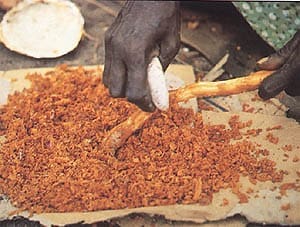
Scraping a root of the dye plant Coelospermum reticulatum
National costume of Australia is the dress or uniform worn by the natives of that place. A dress that would easily make others understand the particular place the person belongs to. While Australia has no single identical national costume, an Australian national dress style, based on specific local dress styles, has materialized in response to climate, lifestyle and identity. This is reflected in the modern design of dress by emerging and established designers, which incorporate particular defining elements. Australian dresses can be seen in the local Australian designs. Bush wear, swimwear are the various Australian variety. These styles are formed of larrikin attitude. Dress is also characterized by the migrant experience and the process of cultural borrowing, which is part of the unique history of Australia. Presenting Australian national dress depends on the local Australian culture, though the national dress concept differs from that of a local dress. Australia probably has no set national costume. The oldest historical costume would be that of the Australian Aboriginals, and that costume would be very little or nothing at all. A modern day costume might be a beachwear or perhaps board shorts and a sunhat.
Australia is a culturally rich country. Theatres keep happening and there are a set of audience who are regular in theatres. They enact some characters or the other. While doing so they use costumes to make the character and the era alive. Costumes can be of different types and each of them signifies a phase or a status of the society.
Australia now has a national costume. It consists of the closed fronted ‘Bush Shirt’, waistcoat, moleskin trousers, elastic sided boots, Akurba or felt styled hat. Women weara full-length cotton print dress, sometimes affectionately called “C.W.A.” formal. The costume has been officially recognised by many regional groups. During wet weather, the oilskin raincoat known as the ‘Dryzabone’ coat is worn. The oldest historical costume would be that of the Australian Aboriginals, these ceremonial costumes are usually secret and part of their ceremonial wear. Only a few anthropologists have seen them fully attired. Australia is a multi-cultural country, made up of peoples from all over the world, so there are local celebrations with national costumes from many lands.
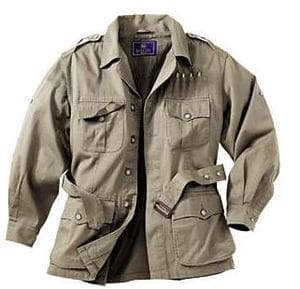
Bush Shirt
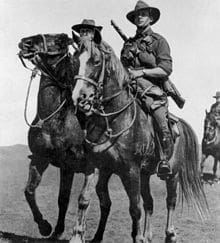

Slouch Hats

Boots
References:
- https://www.britannica.com/place/Australia
- https://en.wikipedia.org/wiki/Aboriginal_Australians
- https://en.wikipedia.org/wiki/Indigenous_Australians#Culture
- https://study.com/academy/lesson/australian-textile-industry.html#:~:text=Due%20to%20the%20massive%20amount,wool%20as%20a%20raw%20product
- http://archive.maas.museum/hsc/paperbark/history.html
- https://en.wikipedia.org/wiki/Australian_Aboriginal_fibrecraft
- https://betterpersonality.weebly.com/national-costumes-australia.html
- https://en.wikipedia.org/wiki/Folk_costume#Australia_and_New_Zealand
Article written by: Arwa Aamir Kalawadwala
M.Sc. in Textile and Fashion Technology
College of Home Science, Nirmala Niketan.
Textile Value Chain Intern.

